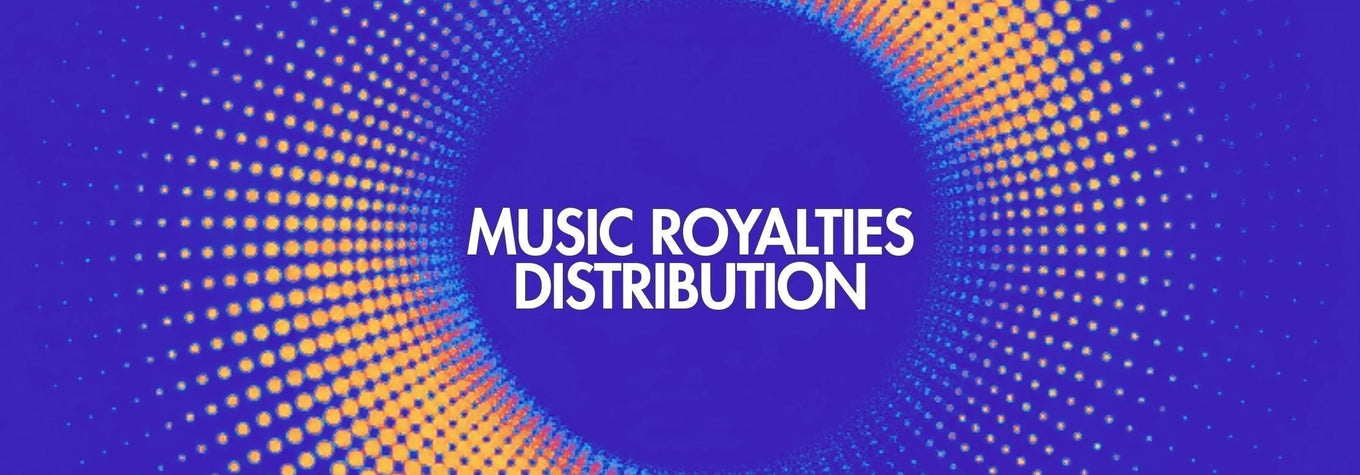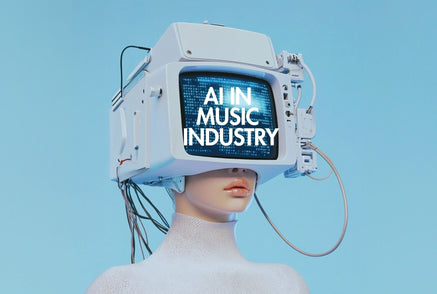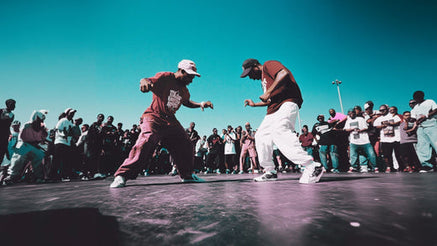Music Royalties Distribution: How to Make Money Effectively?
Royalties often become crucial for artists developing their careers on music streaming platforms. Spotify, Apple Music, SoundCloud, and others offer different terms and conditions of monetization. Artists receive different payments depending on the engagement and type of profiles listening to your content. Moreover, today we have various types of royalties:
-
Mechanical royalties are formed during music distribution and reproduction.
-
Performance royalties are earned when the music is performed in public places.
-
Synchronization royalties are received when the song is synchronized with video content, especially in TV shows and commercials.
Royalties become the main source of income, keeping musicians on track and helping them develop their music careers. The further they go in the music industry, the more they can get royalty payments and partnership deals with labels, brands, and other artists. Unfortunately, the problem of music royalty distribution hasn't gone anywhere, as royalty calculation has never been properly organized. It's one of the biggest problems in the area of music streaming, making artists get less than they deserve, and searching for ways to earn more on music streaming. Musicians search for tools that help you achieve the needed accuracy in payments. One of them is Audoo, and in this article, we will analyze its impact on music business and income distribution.
|
Type of Royalty |
Definition |
When It’s Earned |
Who Receives It |
Examples |
|
Mechanical Royalties |
Payment for the reproduction or distribution of a copyrighted song. |
Earned whenever a song is sold, streamed, or reproduced (e.g., physical sales, digital downloads, or streams). |
Songwriters and publishers |
A song being streamed on Spotify, sold on a CD, or downloaded on iTunes. |
|
Performance Royalties |
Payment for the public performance or broadcast of a song. |
Earned when a song is played on the radio, at a live concert, in a public space, or streamed online. |
Songwriters, publishers, and performing rights organizations (PROs) |
A song played on a radio station, performed live, or used in a bar/restaurant. |
|
Synchronization Royalties |
Payment for the use of a song in visual media such as TV, movies, commercials, or video games. |
Earned when a copyrighted song is licensed for synchronization with visual content. |
Songwriters and publishers. |
A song is used in a movie trailer, TV commercial, or video game. |
A table with detailed explanations about each type of royalty for musicians. In our article, we will focus on the main models of royalty distribution.
What Are Common Royalties Distribution Models for Musicians?
Most users believe that money goes directly to their balance after the music is streamed. This model differs for every platform, and everything depends on the royalty payment model adopted by digital service providers (DSP) set to offer fair rewards for artists whose music is streamed. Today, there are two main royalty distribution models: the user-centric model and the pro-rata model.
The Pro-rata Model
The pro-rata model is based on aggregating, consuming, and spending funds from a country's subscriber population, distributing royalties to rights holders as "pro-rata" to their streams. In the calculation of money provided for a particular performer, digital service providers identify the split share of all streams shared in a particular country for a month. After that, the right holder receives a percentage of the streaming service's revenue distributable in the selected country.
To give you a better understanding of how the pro-rata model works, have a look at the detailed points below:

Despite so many steps and numerous calculations, the pro-rata model's advantage is simplicity, as the distribution among musicians becomes easy regardless of how many tracks and artists are on the platform. Also, artists with high play counts are paid high, which reflects their popularity. Still, this model is not perfect. The most criticized points are the disproportion in earnings and the mismatch of user preferences. The first point means that famous artists are always on top of the revenue pool, so emerging musicians have fewer opportunities to boost their earnings. The second point is that if users subscribe for someone, their funds won't support musicians directly. All money goes into a general pool and is distributed proportionally.
The User-centric Model
The user-centric model stands out as an alternative to the first option. The main idea is that each user generates revenue individually, according to how they consume music, use paid subscriptions, etc. With this model, the royalty calculation does not depend on the country's population, it's about individual user activity. The revenue is sent to the right holders of tracks streamed on the platform.
For the user-centric royalty calculation model, we don't have a shared pool. It means when the user pays for the subscription, the funds, excluding 30% that go directly to the streaming platforms, go directly to the right holders of tracks people listened to. In this case, the pay-per-stream depends on the number of streams generated over a certain period.
Besides noticing both royalty distribution models, consider that streaming services do not pay musicians directly. The payments go to record labels, distributors, and publishers according to individual agreements. The same can say about pay-per-stream systems. The cost of a single stream varies on multiple factors, including the country the song was streamed in and what are the agreements between musicians and labels/distributors.
How are Music Royalties Generated?
There’s a difference between royalties received by performing artists paid by record labels after concerts and live shows, and mechanical royalties generated from music streaming. The final payments differ depending on the platform the music is streamed on, and the country the music is streamed in. For example, Spotify does not negotiate with the musicians about the revenue. They share the revenue according to current agreements. Let’s bring down an example of each royalty earning to understand how the system works.
Mechanical royalties should be paid when a record label produces and sells a CD. Both songwriters and publishers receive royalties for each sale. Still, when the music is streamed on platforms like Spotify, the payment includes both mechanical and performance royalties. If your tracks are available on CDs and people purchase them, people
Performance royalties are set as a reward for public performance. It means not only singing your song during public events and concerts. It’s also about playing it on radio broadcasts and television. For example, when the track appears on the radio frequency or in the music show on TV, musicians receive performance royalties for them. Today, performance rights organizations (PROs) are responsible for collecting performance royalties. For example, Eminem’s latest performance in Abu Dhabi will be rewarded with performance royalties. If he appears on a TV show and performs his songs there, the reward for that will belong to the same category.
When your music is used in TV shows or movies, the revenue will be considered as synchronization royalties. For example, when we hear Linkin Park’s music in Transformers, it means the band received synch royalties for that. Another good example of receiving synchronization royalties is Hans Zimmer’s soundtrack for The Amazing Spider-Man 2 when he released the official soundtrack for this motion picture.
Audoo and Its Role in Fair Music Distribution
The Audoo becomes a decisive factor for musicians who struggle due to unfair royalty distribution. The idea of this tool is to provide real-time monitoring of played tracks. The Audoo meets the requirements of GDRP and is easy to install, which makes this program a great solution for collective management organizations (CMOs) and performance rights organization.
Simplified integration and automatization in multiple processes allow you to reduce the time to set it up and take advantage of the system immediately. All you have to do is send a request.
Unlike traditional royalty systems, this one does not depend on self-reports. Musicians don't need to track the activity themselves, avoiding mistakes and incorrect data reports. Due to real-time data collection, this program reduces the human factor and speeds up the process. Another solid advantage of Audoo is that it's compatible with licensing regulations. All the data about played music is verified, so the risk of penalties.
To have a better understanding of what to expect from music platforms in terms of royalties, have a look at the table below. It represents average per-stream payouts.
|
Streaming Platform |
Average Pay Per Stream |
Estimated Streams to Earn $1,000 |
|
Spotify |
$0.00437 |
~229,000 |
|
SoundCloud |
$0.0025 - $0.004 |
~250,000 - 400,000 |
|
Apple Music |
$0.0056 - $0.0078 |
~128,000 - 179,000 |
Sources of information for the table: https://www.themetalverseofficial.com/what-platform-pays-artists-the-most/?utm_source=chatgpt.com
https://www.lalal.ai/blog/how-much-streaming-services-pay-artists-in-2024/?utm_source=chatgpt.com
How to Maximize Income From Music Streaming?
The common point most creators rely on is that your income depends on the number of streams. It's an important factor but not a decisive one. For more impact, you have to focus not only on stats and a number of streams but also on developing a complex marketing strategy that boosts your online presence. With that, you won't only receive royalties but also make a bigger audience and boost your presence as a musician.
An effective marketing strategy provides not only specific measures to increase your presence and change the way you show yourself on multiple platforms but also the way you promote your music. Paid promotion becomes an essential part of the income boost. A paid promotion package is the ultimate boost that pushes your tracks and makes them appear in the highest spots in the charts. With that, they should expect gradual revenue growth.
How do artists receive royalties for music streams?
What types of royalties exist in the music industry?
How are royalties calculated between musicians and producers?






















Mia Hudson
The struggle is real. Most of us barely see any money from streaming, and yet Spotify boasts about billions in payouts. Where’s my cut? 😅
The struggle is real. Most of us barely see any money from streaming, and yet Spotify boasts about billions in payouts. Where’s my cut? 😅